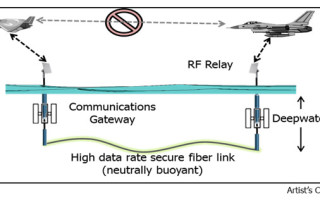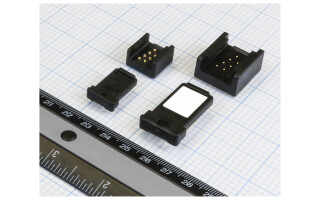DARPA's TUNA program will demonstrate prototype at sea
NewsJanuary 06, 2017

ARLINTON, Va. Defense Advanced Research Projects Agency (DARPA) engineers completed the initial phase of the Agency?s Tactical Undersea Network Architecture (TUNA) program, where they developed concepts and technologies that focus on restoring connectivity for U.S. Forces when tactical networks are taken offline. Engineers will now enter the next phase, which aims to demonstrate a prototype of the system at sea.
“Phase 1 of the program included successful modeling, simulation, and at-sea tests of unique fiber-cable and buoy-component technologies needed to make such an undersea architecture work,” says John Kamp, program manager in DARPA’s Strategic Technology Office. “Teams were able to design strong, hair-thin, buoyant fiber-optic cables able to withstand the pressure, saltwater, and currents of the ocean, as well as develop novel power generation concepts.”
One challenge engineers faced is being able to supply power to floating buoy nodes. The University of Washington’s Applied Physics Lab (APL) developed the Wave Energy Buoy that Self-deploys (WEBS) concept during the first phase. It generates electricity from wave movement and is designed to fit into a cylinder that could be deployed from a ship or aircraft.
During the second phase, the program is advancing to design and implement an integrated end-to-end system, and to test and evaluate this system in laboratory and at-sea demonstrations. As a test case for the TUNA concept, teams are using Link 16 — a common tactical data network used by U.S. and allied forces’ aircraft, ships, and ground vehicles.
The program, TUNA, aims to develop and demonstrate optical-fiber-based technology options and designs to temporarily restore radio frequency (RF) tactical data networks in a contested environment via an undersea optical fiber backbone. The concept involves deploying RF network node buoys that would be connected via thin underwater fiber-optic cables. The very-small-diameter fiber-optic cables being developed are designed to last 30 days in the rough ocean environment—long enough to provide essential connectivity until primary methods of communications are restored.
[youtube=https://www.youtube.com/watch?v=HtP5taXF9FY;w=529&h=472]
Read more on DARPA programs:
UAS claims world record for nonstop unrefueled flight
DARPA plans to develop unmanned swarm tactics in new OFFSET program
DARPA launches Gamifying the Search for Strategic Surprise program






